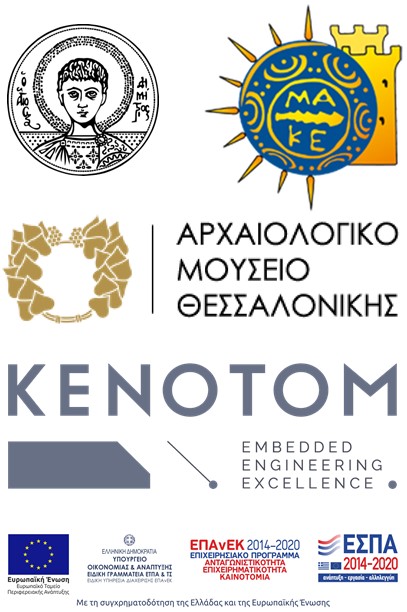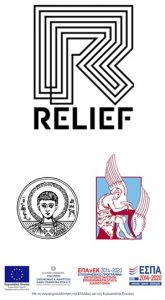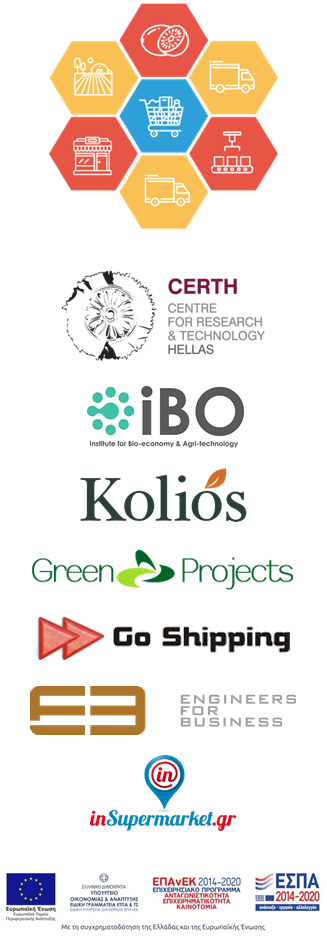RFID Projects
Selected projects & recent RFID case-studiesRFID projects
in operation

CULTUREID
The Internet of Culture: RFID Technology in the Museum
RFID tags will be installed in each of the exhibits of the Archaeological Museum of Thessaloniki. This will allow museum personnel and visitors to digitally interact with exhibits through appropriate RFID reading equipment, which will be installed in the Museum.
For the Museum, it will ensure the automatic recording of any interaction with the exhibits (maintenance, movement, interest-rate in the exhibition, etc.). Visitors will be given a personalized tour at their mobile device (mobile, tablet), depending on their location, interests, and congestion in the Museum.
In addition, an original portable device (tablet-like) and a social robot, capable of interacting with exhibits and visitors and playing games related to the exhibits or providing information to visitors will be built. The robot will be able to hold a conversation with visitors and aims to increase the interest of younger visitors to the cultural content of the museum.

RELIEF
Intelligent Repeaters and Robots for Fast, Reliable, Low-Cost RFID Inventorying & Localization
The RELIEF team designs and builds autonomous robots capable of moving at any (including previously unknown) place, constantly identifying and localizing all surrounding products. The robots build a map of the unknown area and determine the location of all the products with a precision of a few centimeters. The project is at the heart of the supply chain management and aims to ensure an autonomous 24/7 inventorying.
Benefits:
Easy, fast and accurate inventory, where and as often required.
Reduction of errors, irritability and uncertainty.
Elimination of time consuming manual labor.
Better warehouse management and overstock reduction and lead to substantial savings.
Reduction of stock-outs, preventing sales decline and customer frustration.
Who can benefit:
Warehouses – logistics
Large retail stores
Libraries
Hospitals
Airports
Precision agriculture

AgroTRACE
Integrated System for Traceability and Agrologistics of Fresh Fruits and Vegetables
The AGROTRACE project aims to achieve end-to-end traceability of a fresh product supply chain through the deployment system, which will combine internal and external tracking processes, so that each operator is able to identify the immediate source and immediate recipient of the products. The system will apply the “one step up, one step down” principle to provide effective tracking in the supply chain. In particular, each distinct product will be recognized globally and in a unique way so that it can be located upstream and downstream of the supply chain. All participants in the distribution network will be able to use the system to implement internal and external traceability practices, and in addition, internal traceability will be implemented in such a way as to ensure the necessary connections between inputs and outputs.
The main objective of the system to be developed is to effectively support this implementation through a 4-step process:
- Recognition: Following the GS1 standards, the system will (at unit level) discriminate all fresh products (commercial items), infrastructures, sites and so on, from the cultivator to the consumer. These numbers will provide links between the fresh product and the product-specific information.
- Recording: GS1 system data carriers will be used for data management to meet different supply chain process needs for different products. The EAN / UPC barcodes are to be used for scanning at retail outlets. The GS1-128 barcodes will be used to identify product units in packaging and pallets to help inform product information and monitor their movement. GS1 DataBar barcodes that carry the same – and in some cases larger volumes – information in less space than the UPC barcodes will also be used. The data encoded in GS1 system carriers will not only identify the products (and product units) but will allow the trading partners to share large volumes of data (batch number, date of production, packaging information, etc.).
- Evaluation: The information gathered will be evaluated against the objectives expressed in the form of Performance Indicators (KPIs) set by the supply chain partners. In addition, the system will enable KPIs from the SCOR (Supply Chain Operations Reference) model to enable “anonymous” benchmarking of chain partners’ performance.
- Sharing: The interoperability of our system will facilitate the smooth exchange of information in trade transactions. The following GS1 interface templates are to be used: GDSN (Global Data Synchronization Network): GDSN connects trading partners to the GS1 Global Registry® via GS1 Certified Data, allowing the immediate electronic exchange of standardized, up-to-date and verified information.
